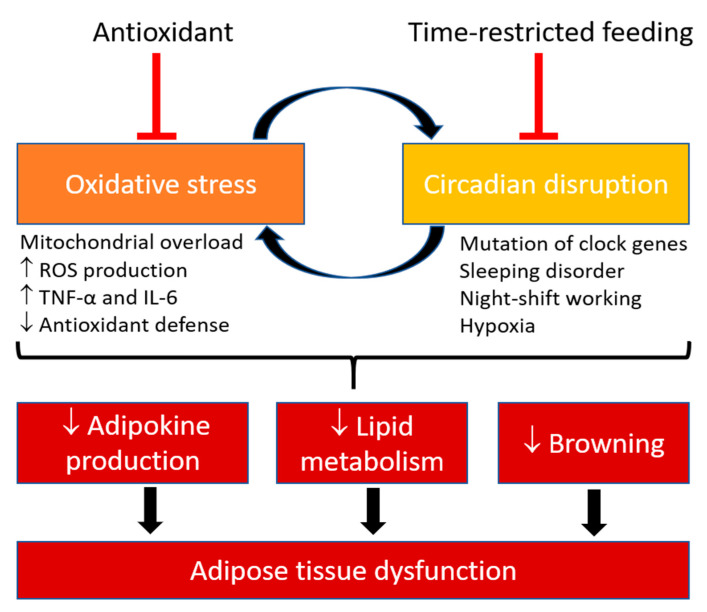Figure 2.
Oxidative stress and circadian rhythm are interrelated in modulating adipose tissue function. Circadian clock regulates the rhythmic oscillation of cellular redox function, while changes in redox state in the cell can influence the clock machinery. Oxidative stress occurs when the production of oxidant molecules exceeds the capacity of antioxidants to defend against these insults. The cellular redox state has been known to oscillate over circadian. Animal models of circadian disruption by hypoxia, clock genes knockout or mutant, night-shift workers and patients with sleeping disorder are reported to have increased oxidative stress and reduced antioxidant defence. Disruption of circadian and increased oxidative stress lead to reduction of adipokine productions, lipid metabolism and browning process in adipose tissue. Metabolic and cardiovascular diseases that are caused by disruption of circadian rhythm and increased oxidative stress can be prevented by antioxidants treatment and time-restricted feeding. ROS, reactive oxygen species; TNF-α, Tumor necrosis factor alpha; IL-6, interleukin 6.

